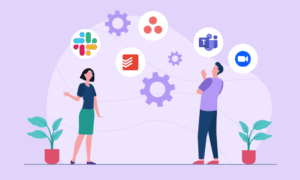Hao Qin is an independent AI researcher and applied technologist whose work sits at the intersection of large-scale data engineering and domain-specific large language models (LLMs). Over the past decade he has focused on bringing cutting-edge generative-AI techniques into tightly regulated arenas—cryptocurrency exchanges, public-sector document processing, and clinical-decision support. Hao’s research has produced peer-reviewed publications on crypto-risk analytics, AI-enabled government modernization, and precision healthcare; his technical contributions have been cited in hundreds of peer-reviewed journals in the field. Last year he was invited to serve as a Program Committee member for the 2024 International Web Information Systems Engineering conference.
A graduate of the University of Pennsylvania, Hao earned a Master’s degree in Computer Graphics and Game Design after completing undergraduate studies in Computer Science. We spoke with him about building specialized language models, accelerating government document workflows, and the safeguards that keep AI both powerful and trustworthy.
How are domain-specific language models changing day-to-day software work in highly regulated industries?
Generative AI once felt like an exotic add-on; it now resembles the leap from paper ledgers to spreadsheets.
In finance, a crypto-tuned model can digest mempool traffic, exchange order books and regulatory filings in near-real time. The effect is twofold: it spots fraudulent wallet behavior minutes sooner than manual heuristics and drafts compliant smart-contract clauses that legal teams can vet instead of writing from scratch.
In public agencies we see a similar pattern. What used to be a month-long rule-making process is compressed because an LLM can synthesize statutes, precedent and stakeholder comments into side-by-side policy options. The human role shifts from authoring to adjudicating.
Where do these models shine, and where do they still stumble?
They shine wherever pattern density is high and tolerance for boilerplate is low. Think “generate all the REST endpoints that follow this spec” or “summarize 10,000 pages of budget testimony into five funding scenarios.”
They stumble at the foggy edges—system-wide trade-offs, security nuances, anything that requires a lived sense of risk appetite. An LLM may recommend a perfectly valid encryption library yet ignore the procurement policy that forbids its license. That blind spot is shrinking, but today it still demands human arbitration.
Speed is seductive. How do you keep quality and security from eroding?
I treat the model as the map, not the guide. A map shows every trail; only experience picks the safe ascent.
We pipe all AI-generated diffs through the same static-analysis and threat-modeling gates we apply to human code. The AI accelerates the climb, but guardrails remain immovable: zero-trust review, reproducible builds, and a mandatory human sign-off for any change touching cryptography or PII.
What does human oversight look like in an AI-accelerated pipeline?
Human oversight unfolds in three distinct layers. First comes context framing, where people spell out the business objectives and regulatory limits the model cannot infer. Next is technical judgment: when the system suggests several refactorings, an engineer weighs latency, licensing, and skill-set implications before selecting the best path. Finally, ethical and security review closes the loop; quarterly bias assessments and red-team drills ensure the model remains accountable, with humans retaining ultimate responsibility for every decision.
What advice would you give organizations just beginning their domain-specific LLM journey?
Start with a single, painful use-case—the report everyone dreads, the queue that always backs up—rather than aiming for a platform rewrite. For a mid-sized exchange we chose suspicious-transaction triage: narrow scope, high business value, clear success metric (false-positive reduction). That laser focus builds credibility and an internal reference architecture you can clone for the next domain.
Second, curate before you fine-tune. Forty percent of project time should go into cleaning logs, tagging edge cases, and removing policy-violating examples. An ounce of curation beats a ton of parameter tweaking; a dirty dataset will haunt every inference call.
Third, pair engineers with domain experts from day one. A risk officer who can explain why a pattern matters is worth ten generic data scientists.
Fourth, treat DevSecOps as table stakes. Every inference path funnels through the same secrets-management, observability, and rollback pipelines as core production code. If your LLM stack sits on an island, you’re inviting shadow IT and, eventually, an incident.
Finally, plan for model rot. Regulations evolve, fraud tactics mutate, medical guidelines update. We schedule quarterly “drain-and-refill” cycles: retrain on fresh data, rerun evaluation suites, and publish a changelog to downstream teams. That ritual institutionalizes the idea that an LLM is a living system, not a one-off deliverable.
Are LLMs altering the skill set a developer needs?
Yes. Prompt literacy is the new regular expression. Developers must articulate intent so precisely that the model delivers signal, not noise. At the same time, architectural thinking becomes premium currency: if implementation is half automated, the value migrates to designing resilient boundaries and validating AI output. Validation itself—spotting hallucinated references, latent vulnerabilities—turns into a craft.
Looking ahead, what excites you most about AI-augmented engineering?
I’m most energized by the prospect of a domain-tuned LLM purpose-built for government document workflows. Envision an environment where I can annotate a legislative bill with a quick markup, describe throughput or redaction constraints in plain English, and the model automatically produces the end-to-end pipeline: OCR settings, entity-extraction code, policy cross-references, even the audit-trail hooks that satisfy FOIA requirements.
The breakthrough will hinge on a multimodal foundation—one that reads scans, parses statutory language, and understands metadata schemas simultaneously. Add a federated training layer and every agency—from the city clerk’s office to a federal regulator—can fine-tune on encrypted, in-house archives while sharing only anonymized embeddings. The pay-off is massive: minutes instead of weeks to classify, route, and publish public records; real-time impact analysis when a new rule cites existing statutes; and a transparent provenance log that gives auditors line-by-line traceability.
Building that specialized LLM isn’t just an efficiency play; it’s a civic upgrade, turning slow bureaucratic paper trails into living, query-ready knowledge graphs that make government more responsive and trustworthy.
The destination—software that delivers value quickly, safely and inclusively—hasn’t changed. We’re just swapping the shovel for a power tool, and learning to wield it responsibly.





























